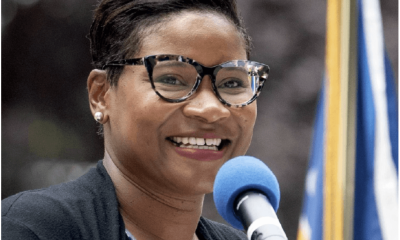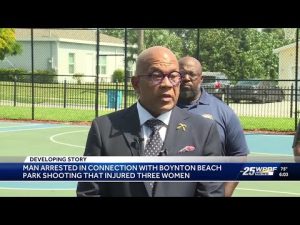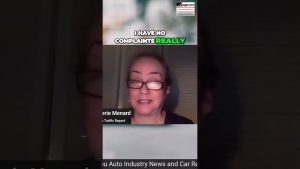Featured
Concerns Over Army Base Jobs as Development Breaks Ground
As the city prepares to kick off its long awaited land-sea transport hub development at the old Army Base, West Oakland community activists are raising concerns about the project, seeking to ensure that the city and developers deliver on the promise of jobs and protect the environmental health of the local community.
The $1.2 billion Oakland Global Trade and Logistics Center, which will break ground Friday afternoon on city land adjacent to the Port of Oakland, will “create thousands of jobs, boost port competitiveness, reduce environmental impacts and help revitalize Oakland,” according to the press announcement released last week by the office of Mayor Jean Quan.
Yet estimates of how many jobs the project will create, originally as high as 8,000 construction and permanent jobs, have diminished as groundbreaking day has approached.
According to Mayor Quan’s press release last week, “Phase I will generate an estimated 1,500 on-site construction jobs,” which means 50 percent or about 750 jobs will be go to Oakland residents over the next four years or five years.
However, as late as October 2012, Quan told KCBS the development will “create about 5,000 good paying, blue collar jobs, of which at least half … have to be from the City of Oakland. And we’re going to make sure it’s more if we can.”
“If we are looking for this project to create thousands of jobs, we’re likely to be disappointed,” said Brian Beveridge, co-director the West Oakland Environmental Indicators Project (WOEI), which has worked for years to clean up West Oakland, and is part of OaklandWorks, which worked to ensure local residents benefit from the Army Base development.
Construction projects nowadays involve many fewer workers than in the past, and state-of-the-art warehouses, when they are finally built, will be highly automated, producing many fewer jobs than many people had hoped for, said Beveridge.
Though still supportive of the Army Base development, which can create some jobs for Oakland and boost the Bay Area and the national economy, he said, it will not be the economic engine that will create the levels of employment that Oakland must see in order to end chronic unemployment.
City Council members were upset last year when they were told at a meeting that the project would only produce about 80-90 jobs in its first 18 months.
“We were told by (city officials) that there would be about 80 jobs the first year for operating engineers, pile drivers and laborers,” said Margaret Gordon, co-director of WOEIP.
When the city puts out a figure like 1,500 jobs, “we do not know if they are talking about full-time or part-time, people who work for months or only a day or two, office staff or lawyers, laborers or carpenters. They have not broken it down,” she said.
In addition, Beveridge said, the local hiring agreement, which pledges 50 percent of all the jobs will go to local residents, applies to the construction phase of the project, not to the companies that will operate at the finished project
“Phil Tagami says he’s totally committed to local hire, but his partners, like Prologis, are not so committed,” when it coming to guaranteeing that Oakland residents are hired at the companies that build and lease at the project, said Beveridge.
“They didn’t want to have any constraints on them. When they lease warehouses, they want to have as much latitude as possible when negotiating with their future tenants,” he said.
Further, Quan in her press statement seems to claim credit for “220 jobs already created by the construction of the rail yard.” However, that is a Port of Oakland project and has nothing to do with the city’s developer, CCIG, owned by Phil Tagami.
According to a port spokesman, the rail yard project so far has hired 123 Oakland residents, a mix of full time and temporary employees.
Disagreeing with Mayor Quan’s press statement that celebrates that the project is going to “reduce environmental impacts,” Beveridge said that at this point, the city is committed to making the project “just as clean as the law requires.”
However, there has been a great deal of resistance on the part of the city and the developer to meeting with the community and regulatory agencies to discuss its plans to mitigate the impacts that result from building the project and installing increased shipping capacities, trucking and rail lines.
“The city’s agreement covers the legal requirements for clean air,” said Beveridge. “(But) what the air district is saying is they would like to see innovative projects above and beyond the requirements of the law. They say they will help to bring other resources to the project to bring make it the greenest, most innovative project possible, but there doesn’t seem to be interest in that.”
Added Margaret Gordon: “There is no air toxic emission reduction mitigation plan. The city has allowed the master developer to do air quality monitoring, which is part of a plan, but it’s not a total plan. None of the air quality regulatory groups have signed off on any emissions reduction plan.”
“All they say is that they will meet ‘standard conditions of approval,’ which could mean anything,” said Gordon.
In addition, there is no plan for where all the additional trucks will be parked or the containers and the chassis will be stored.
The city did not require the master developer to create a transition plan for where trucks would go when the Army Base truck-parking site was shut down. There was no plan for what would happen to inspections of hazardous cargo when the city evicted that company that did it at the Army Base property.
Assistant City Administrator Fred Blackwell was contacted a number of times by the Post, but he did not return calls.
Alameda County
Seth Curry Makes Impressive Debut with the Golden State Warriors
Seth looked comfortable in his new uniform, seamlessly fitting into the Warriors’ offensive and defensive system. He finished the night with an impressive 14 points, becoming one of the team’s top scorers for the game. Seth’s points came in a variety of ways – floaters, spot-up three-pointers, mid-range jumpers, and a handful of aggressive drives that kept the Oklahoma City Thunder defense on its heels.

By Y’Anad Burrell
Tuesday night was anything but ordinary for fans in San Francisco as Seth Curry made his highly anticipated debut as a new member of the Golden State Warriors. Seth didn’t disappoint, delivering a performance that not only showcased his scoring ability but also demonstrated his added value to the team.
At 35, the 12-year NBA veteran on Monday signed a contract to play with the Warriors for the rest of the season.
Seth looked comfortable in his new uniform, seamlessly fitting into the Warriors’ offensive and defensive system. He finished the night with an impressive 14 points, becoming one of the team’s top scorers for the game. Seth’s points came in a variety of ways – floaters, spot-up three-pointers, mid-range jumpers, and a handful of aggressive drives that kept the Oklahoma City Thunder defense on its heels.
One of the most memorable moments of the evening came before Seth even scored his first points. As he checked into the game, the Chase Center erupted into applause, with fans rising to their feet to give the newest Warrior a standing ovation.
The crowd’s reaction was a testament not only to Seth’s reputation as a sharpshooter but also to the excitement he brings to the Warriors. It was clear that fans quickly embraced Seth as one of their own, eager to see what he could bring to the team’s championship aspirations.
Warriors’ superstar Steph Curry – Seth’s brother – did not play due to an injury. One could only imagine what it would be like if the Curry brothers were on the court together. Magic in the making.
Seth’s debut proved to be a turning point for the Warriors. Not only did he contribute on the scoreboard, but he also brought a sense of confidence and composure to the floor.
While their loss last night, OKC 124 – GSW 112, Seth’s impact was a game-changer and there’s more yet to come. Beyond statistics, it was clear that Seth’s presence elevated the team’s performance, giving the Warriors a new force as they look to make a deep playoff run.
#NNPA BlackPress
LIHEAP Funds Released After Weeks of Delay as States and the District Rush to Protect Households from the Cold
BLACKPRESSUSA NEWSWIRE — The federal government has released $3.6 billion in home heating assistance after a delay that left states preparing for the start of winter without the program’s annual funding.

By Stacy M. Brown
Black Press USA Senior National Correspondent
The federal government has released $3.6 billion in home heating assistance after a delay that left states preparing for the start of winter without the program’s annual funding. The Low-Income Home Energy Assistance Program, known as LIHEAP, helps eligible households pay heating and cooling bills. The release follows a shutdown that stretched 43 days and pushed agencies across the country to warn families of possible disruptions.
State officials in Minnesota, Kansas, New York, and Pennsylvania had already issued alerts that the delay could slow the processing of applications or force families to wait until December for help. In Pennsylvania, more than 300,000 households depend on the program each year. Minnesota officials noted that older adults, young children, and people with disabilities face the highest risk as temperatures fall.
The delay also raised concerns among advocates who track household debt tied to rising utility costs. National Energy Assistance Directors Association Executive Director Mark Wolfe said the funds were “essential and long overdue” and added that high arrearages and increased energy prices have strained families seeking help.
Some states faced additional pressure when other services were affected by the shutdown. According to data reviewed by national energy advocates, roughly 68 percent of LIHEAP households also receive nutrition assistance, and the freeze in multiple programs increased the financial burden on low-income residents. Wolfe said families were placed in “an even more precarious situation than usual” as the shutdown stretched into November.
In Maryland, lawmakers urged the Trump administration to release funds after the state recorded its first cold-related death of the season. The Maryland Department of Health reported that a man in his 30s was found outdoors in Frederick County when temperatures dropped. Last winter, the state documented 75 cold-related deaths, the highest number in five years. Rep Kweisi Mfume joined more than 100 House members calling for immediate federal action and said LIHEAP “is not a luxury” for the 100,000 Maryland households that rely on it. He added that seniors and veterans would be placed at risk if the program remained stalled.
Maryland Gov. Wes Moore used $10.1 million in state funds to keep benefits moving, but noted that states cannot routinely replace federal dollars. His administration said families that rely on medical equipment requiring electricity are particularly vulnerable.
The District of Columbia has already mapped out its FY26 LIHEAP structure in documents filed with the federal government. The District’s plan shows that heating assistance, cooling assistance, weatherization, and year-round crisis assistance operate from October 1 through September 30. The District allocates 50 percent of its LIHEAP funds to heating assistance, 10 percent to cooling, 13 percent to year-round crisis assistance, 15 percent to weatherization, and 10 percent to administrative costs. Two percent is used for services that help residents reduce energy needs, including education on reading utility bills and identifying energy waste.
The District’s plan lists a minimum LIHEAP benefit of $200 and a maximum of $1,800 for both heating and cooling assistance. Crisis benefits are provided separately and may reach up to $500 when needed to resolve an emergency. The plan states that a household is considered in crisis if it has been disconnected from energy service, if heating oil is at 5 percent or less of capacity, or if the household has at least $200 owed after the regular benefit is applied.
The District’s filing notes that LIHEAP staff conduct outreach through community meetings, senior housing sites, Advisory Neighborhood Commissions, social media, posters, and mass mailings. The plan confirms that LIHEAP applicants can apply in person, by mail, by email, or through a mobile-friendly online application and that physically disabled residents may request in-home visits.
As agencies nationwide begin distributing the newly released funds, states continue working through large volumes of applications. Wolfe said LIHEAP administrators “have been notified that the award letters have gone out and the states can begin to draw down the funds.”
#NNPA BlackPress
Seven Steps to Help Your Child Build Meaningful Connections
BLACKPRESSUSA NEWSWIRE — Swinging side by side with a friend on the playground. Sharing chalk over bright, colorful sidewalk drawings. Hiding behind a tree during a spirited game of hide-and-seek. These simple moments between children may seem small, but they matter more than we think
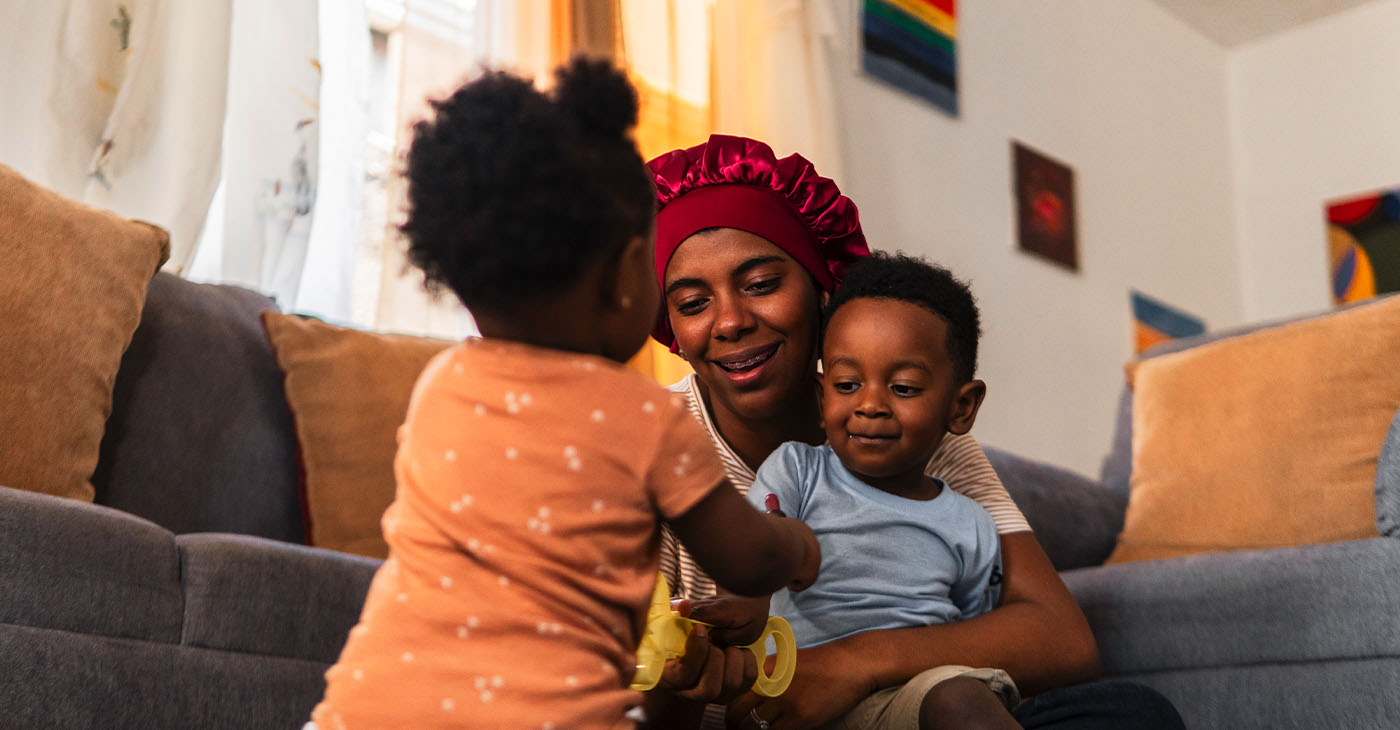
By Niyoka McCoy, Ed.D., Chief Learning Officer, Stride/K12
Swinging side by side with a friend on the playground. Sharing chalk over bright, colorful sidewalk drawings. Hiding behind a tree during a spirited game of hide-and-seek. These simple moments between children may seem small, but they matter more than we think: They lay the foundation for some of life’s most important skills.
Through everyday play, young children begin learning essential social and emotional skills like sharing, resolving conflicts, showing empathy, and managing their emotions. These social skills help shape emotional growth and set kids up for long-term success. Socialization in early childhood isn’t just a “nice-to-have”—it’s essential for development.
Yet today, many young children who haven’t yet started school aren’t getting enough consistent, meaningful interaction with peers. Research shows that there’s a decline in active free play and peer socialization when compared to previous generations.
There are many reasons for this. Children who are home with a parent during the day may spend most of their time with adults, limiting opportunities for peer play. Those in daycare or preschool may have restricted free play, and large classrooms can reduce supervision and social coaching. Some children live in rural areas, are homebound due to illness, have full schedules, or rely on screens to fill their playtime. And for some families, finding other families with young children to connect with isn’t easy.
While these challenges can feel significant, opportunities for connection still exist in every community. Families can take simple steps to help children build friendships, create a sense of belonging, and strengthen social skills. Here are some ideas to get started:
- Storytime sessions at libraries or local bookstores
- Community offerings such as parent-child workshops, art, music, gymnastics, swimming, or sports programs
- Weekly events at children’s museums, which may include art projects, music workshops, or science experiments
- Outdoor exploration, where kids can play with peers
- Local parenting groups that organize playdates and group activities
- Volunteer opportunities where children can participate, such as pet adoption events or packing meals at a food bank
- Classes for kids at local businesses, including hardware, grocery, or craft stores
Some of these community activities are free or low-cost and give kids the chance to build friendships and practice social skills. Parents can also model positive social behavior by interacting with other parents and encouraging their children to play with their peers.
These may seem like small moments of connection, but they can have a powerful impact. Every time your child shares a toy, plays make-believe with peers, or races a friend down the slide, they’re not just playing—they’re learning the skills that build confidence, empathy, and lasting friendships. And it’s good for you, too. Creating intentional opportunities for play also helps you strengthen your own network of parents who can support one another as your children grow together.
-

 Activism3 weeks ago
Activism3 weeks agoOakland Post: Week of November 12 – 18, 2025
-
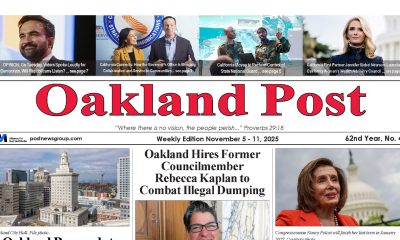
 Activism4 weeks ago
Activism4 weeks agoOakland Post: Week of November 5 – 11, 2025
-

 Activism2 weeks ago
Activism2 weeks agoIN MEMORIAM: William ‘Bill’ Patterson, 94
-

 Activism3 weeks ago
Activism3 weeks agoHow Charles R. Drew University Navigated More Than $20 Million in Fed Cuts – Still Prioritizing Students and Community Health
-

 #NNPA BlackPress3 weeks ago
#NNPA BlackPress3 weeks agoThe Perfumed Hand of Hypocrisy: Trump Hosted Former Terror Suspect While America Condemns a Muslim Mayor
-

 Bay Area3 weeks ago
Bay Area3 weeks agoNo Justice in the Justice System
-

 #NNPA BlackPress3 weeks ago
#NNPA BlackPress3 weeks agoProtecting Pedophiles: The GOP’s Warped Crusade Against Its Own Lies
-

 #NNPA BlackPress2 weeks ago
#NNPA BlackPress2 weeks agoTrump’s Death Threat Rhetoric Sends Nation into Crisis

